Housing Authority of the City of Pittsburgh, HACP
Architecture and Engineering Design Services
Construction Management Services
Client Challenge
In 1984, four United States government agencies adopted uniform standards for the design, construction and alteration of buildings so that physically handicapped persons will have ready access to and use of public buildings and facilities in accordance with the Architectural Barriers Act, 42 U.S.C. 4151-4157. The uniform standards eliminated the differences between the standards previously used by the four individual agencies, and between those standards and the access standards recommended for facilities that are not federally funded or constructed.
The four agencies that are authorized to issue standards under the Architectural Barriers Act include the following:
1. The General Services Administration, GSA
2. The Departments of Housing and Urban Development, HUD
3. The Department of Defense, DOD, and
4. The United States Postal Service, USPS
The four standard-setting agencies establish and enforce standards for design, construction, and alteration of particular types of buildings and facilities. The General Services Administration (GSA) prescribes standards for all buildings subject to the Architectural Barriers Act that are not covered by standards issued by the other three standard-setting agencies. The Department of Defense (DOD) prescribes standards for DOD installations. The Department of Housing and Urban Development (HUD) prescribes standards for residential structures covered by the Architectural Barriers Act except those funded or constructed by DOD, and the U.S. Postal Service (USPS) prescribes standards for postal facilities. Each of the four agencies issues standards in accordance with its statutory authority.
To ensure compliance with the standards, Congress established the Architectural and Transportation Barriers Compliance Board (ATBCB) in Section 502 of the Rehabilitation Act of 1973 (the Rehabilitation Act), 29 U.S.C. 792.
The final rule that established the Guidelines now in effect was published in the FEDERAL REGISTER on August 4, 1982 (47 FR 33862) and is codified at 36 CFR part 1190.
The four standard-setting agencies determined that the uniform standards adopted by them would, as much as possible, not only comply with the Guidelines adopted by the ATBCB but also be consistent with the standards published by the American National Standards Institute (ANSI) for general use. ANSI is a nongovernmental national organization that publishes a wide variety of recommended standards. A committee made up of 52 organizations representing associations of handicapped people, rehabilitation professionals, design professionals, builders, and manufacturers develops ANSI’s standards for barrier-free design. The standards, which are called ANSI A117.1, "Specifications for Making Buildings and Facilities Accessible to, and Usable by, Physically Handicapped People," are developed using the consensus process.
The original ANSI A117.1, adopted in 1961, formed the technical basis for the first accessibility standards adopted by the federal government and most state governments. The current edition, ANSI A117.1-1980, is based on research funded by HUD. It has generally been accepted by the private sector and has been recommended for use in model state and local building codes by the Council of American Building Officials.
In keeping with the objective of uniformity between federal requirements and those commonly applied by state and local governments, the Uniform Federal Accessibility Standards (UFAS) follows ANSI A117.1-1980 in format. Both the UFAS scope provisions, which establish the minimum number of elements and spaces required to comply with standards, and the UFAS technical requirements meet or exceed the comparable provisions of the Guidelines.
The UFAS was published in the FEDERAL REGISTER on August 7, 1984 (49 FR 31528). Each of the standard-setting agencies has taken action in accordance with its own procedures, including internally prescribed rulemaking and the Administrative Procedure Act where applicable, to incorporate the UFAS in its own standards, regulations, or other directives.
GSA adopted the UFAS in 41 CFR 101-19.6, effective August 7, 1984. HUD adopted the UFAS in 24 CFR part 40, effective October 4, 1984. USPS adopted the UFAS in Handbook RE-4, "Standards for Facility Accessibility by the Physically Handicapped," effective November 15, 1984. DOD adopted the UFAS by revising Chapter 18 of DOD 4270.1-M, "Construction Criteria," by memorandum dated May 8, 1985.
Scope of Work
Multi-Lynx Companies, Inc. has been retained by the Housing Authority of the City of Pittsburgh, HACP, Pennsylvania, for architectural and engineering services for the construction of residential units, which must be Uniform Federal Accessibility Standards, UFAS-compliant units in multiple configurations. These are to be constructed at different scattered sites in the Manchester community, which is a designated City of Pittsburgh Historic District, and therefore must conform to neighborhood historical standards, which preclude single-story buildings. Therefore, the structures must have second floors that may be configured for the most feasible unit mix, subject to the approval of the HACP.
The HACP receives direct funding from HUD, one of the UFAS standards-setting agencies.
Multi-Lynx Value
By using innovative and state-of-the-art methodologies, Multi-Lynx Companies, Inc. is currently engaged with the tasks of design and construction management of several UFAS-compliant residential housing units for the Housing Authority of the City of Pittsburgh, HACP. Task orders issued by the HACP to Multi-Lynx include both new construction and renovation of existing housing units.
Multi-Lynx has brought exceptional value to the execution of these task orders in that all the UFAS-compliant units have also been designed for LEED certification.
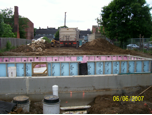
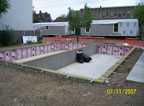
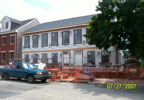
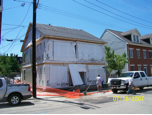
Foundation For A Three-Bedroom UFAS Compliant Modular Unit
Three Bedroom UFAS Compliant Modular Unit
Two Bedroom UFAS Compliant Modular Unit
Foundation For a UFAS Compliant Two-Bedroom Modular Unit

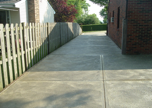
Installation of Formwork For New UFAS Compliant Pathway
Recently Constructed UFAS Compliant Pathway
©Multi-Lynx 2015 All Materials Property of Multi-Lynx
